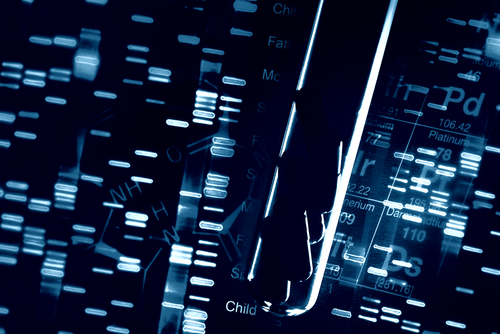 A new study identified a gene signature in E2F4 that is predictive of estrogen receptor positive (ER+) breast cancer. The work entitled “E2F4 regulatory program predicts patient survival prognosis in breast cancer” was published in Breast Cancer Research by Sari S Khaleel part of Dr. Chao Cheng’ group at Department of Genetics, Geisel School of Medicine at Dartmouth, NH, USA, and colleagues.
A new study identified a gene signature in E2F4 that is predictive of estrogen receptor positive (ER+) breast cancer. The work entitled “E2F4 regulatory program predicts patient survival prognosis in breast cancer” was published in Breast Cancer Research by Sari S Khaleel part of Dr. Chao Cheng’ group at Department of Genetics, Geisel School of Medicine at Dartmouth, NH, USA, and colleagues.
The management of cancer prognosis and treatment depends on a series of clinicopathological variables that classify cancer outcomes by categories such as stage, grade and responsiveness to adjuvant therapy.
The great heterogeneity in cancer types makes accurate outcome predictions and selection of the optimal treatment for individual patients a difficult task. Over the last twenty years, progress in the field of molecular biology enabled the identification of molecular signatures and their use in determining cancer prognosis and treatment choice.
Molecular signatures are normally used in early-stage cancers to assess the requirement of adjuvant therapy after surgical resection. A molecular signature that is prognostic and ubiquitous in several clinical contexts would be of great advantage in addition to current signatures.
In this study, researches defined a signature for the tissue factor, E2F4, based on its common target genes in various tissues. The target genes were identified by chromatin immunoprecipitation sequencing (ChIP-seq) experiments trough a probabilistic method. The authors calculated the regulatory activity score (RAS) of E2F4 in cancer tissues and analyzed the correlation between E2F4 RAS and patient survival.
The team found that genes in the E2F4 signature were 21 times more probable to be associated with breast cancer patient survival time when compared to genes chosen randomly. They classified samples using 8 breast cancer datasets with more than 1,900 unique samples divided into two groups according to the activity of E2F4, low and high.
E2F4 activity classification was highly prognostic of patient outcome and the results remain consistent even when taking into account several factors, such as patient age, tumor size, grade and estrogen receptor (ER) status.
The authors established a prognostic signature, the E2F4 regulatory activity score, and demonstrated that it correlated significantly with breast cancer patient’s outcome, independently of therapy status and of many other clinicopathological features. Importantly, this signature could be used in combination with other breast cancer classification methods such as Oncotype DX, to obtain a better prognosis of the clinical outcome.
[adrotate group=”3″]
“Our data-driven approach to designing an effective prognostic genomic signature for E2F4 activity in ER+ breast cancer patients gave us the essential information to develop what will be a simple clinical test to aid physicians in selecting the most effective treatment regimens for each patient,” said Dr. Cheng, in a press release. “Furthermore, our approach is highly flexible, and because of the widespread essentiality of E2F4 in many types of cancer, it will be of great utility in solving many biomedical questions.” he added.
“By developing a flexible, reproducible, and predictive test, we are providing physicians working in many areas of cancer with the information they need to tailor treatment regimens to specific individual patients. This is the essence of personalized medicine: the right treatment for the right patient at the right time.” Dr. Cheng concluded.
The research team is planning to assess the prognostic value of E2F4 in other breast cancer contexts to confirm its broad value and improve the signature E2F4 by reducing it to the most relevant constituent genes.

